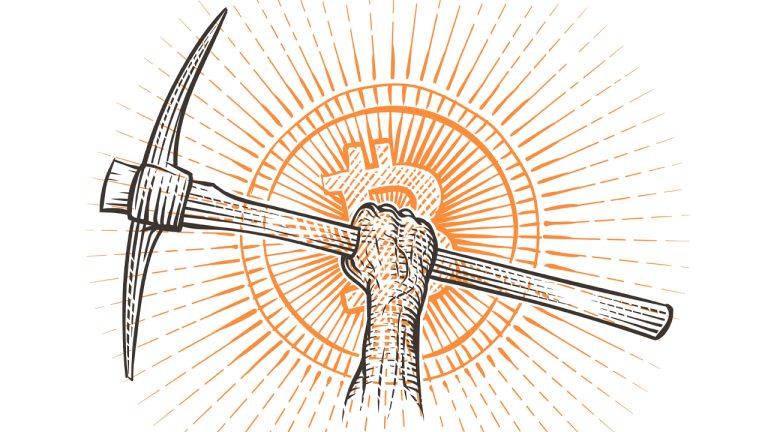
BIT Mining attributed its widened profit margins from DOGE and LTC to specialized LD3 mining machines it acquired from Bee Computing in 2021.
Crypto mining company BIT Mining said its move to mine proof-of-work coins Dogecoin and Litecoin has been more profitable than mining only Bitcoin.
BIT Mining, which previously only mined Bitcoin (BTC), said on Dec. 4 that its expansion into Dogecoin (DOGE) and Litecoin (LTC) “has proved to be nearly three times more profitable than mining BTC alone.”
The company said up until Nov. 27, it had mined 227,908,250.38 DOGE, worth $94.8 million and 84,485.42 LTC, worth $10.7 million. It didn’t say how much of the mined DOGE and LTC it had held onto, as both cryptocurrencies have surged over the past month.

Reddit’s Bitcoin community remains optimistic about BTC, but members are still eager to discuss the most valid concerns regarding Bitcoin's future.
Bitcoin (BTC) has achieved significant success since its inception, but some within the community remain concerned about its future.
On Sept. 14, a Redditor on the Bitcoin subreddit appealed to the community with a question on the most legitimate concerns about the future of BTC.
What scares you the most about Bitcoin’s future? Source: Reddit
 Recent metrics reveal that after Bitcoin’s network hashrate reached an all-time high of 693 exahash per second (EH/s) and saw a 3.58% difficulty increase, its computational power decreased this week. In the nine days since this peak, the hashrate has fallen by 9.95%. Bitcoin Miners Confront Economic Hurdles as Bitcoin Hashrate Dips Bitcoin miners are […]
Recent metrics reveal that after Bitcoin’s network hashrate reached an all-time high of 693 exahash per second (EH/s) and saw a 3.58% difficulty increase, its computational power decreased this week. In the nine days since this peak, the hashrate has fallen by 9.95%. Bitcoin Miners Confront Economic Hurdles as Bitcoin Hashrate Dips Bitcoin miners are […] Bitcoin miners are expanding their hashing capacity, reaching new record highs despite ongoing challenges in profitability. This report from Cryptoquant Institutional Insights highlights that miners are selling off assets as they face diminishing profit margins and rising operational difficulties. Bitcoin Miners Face Capitulation Amid Record-High Hashrate and Squeezed Margins In the latest findings from Cryptoquant’s […]
Bitcoin miners are expanding their hashing capacity, reaching new record highs despite ongoing challenges in profitability. This report from Cryptoquant Institutional Insights highlights that miners are selling off assets as they face diminishing profit margins and rising operational difficulties. Bitcoin Miners Face Capitulation Amid Record-High Hashrate and Squeezed Margins In the latest findings from Cryptoquant’s […] Bitcoin’s hashrate experienced an uptick this week, briefly surpassing 600 exahash per second (EH/s) and currently stabilizing at 598 EH/s. The hashprice, which represents the expected value of 1 petahash per second (PH/s) of hashing power per day, is about $57 per petahash. Mining Centralization Grows as Bitcoin Hashrate and Revenues Shift As of June […]
Bitcoin’s hashrate experienced an uptick this week, briefly surpassing 600 exahash per second (EH/s) and currently stabilizing at 598 EH/s. The hashprice, which represents the expected value of 1 petahash per second (PH/s) of hashing power per day, is about $57 per petahash. Mining Centralization Grows as Bitcoin Hashrate and Revenues Shift As of June […] Based on the three-day simple moving average, Bitcoin’s hashrate has continued its downward trend, registering at about 550 exahash per second (EH/s). Following the halving, onchain costs have decreased significantly, with data indicating transfer fees ranging from $1.50 to $3.65 per transaction. Bitcoin’s Hashrate Slides 19% in 16 Days According to statistics, the three-day simple […]
Based on the three-day simple moving average, Bitcoin’s hashrate has continued its downward trend, registering at about 550 exahash per second (EH/s). Following the halving, onchain costs have decreased significantly, with data indicating transfer fees ranging from $1.50 to $3.65 per transaction. Bitcoin’s Hashrate Slides 19% in 16 Days According to statistics, the three-day simple […]

Blockware Solutions analyst Mitchell Askew says fears around post-halving Bitcoin mining profitability are baseless as crypto miner stock prices have tumbled.
Investor confidence in the Bitcoin (BTC) mining sector’s profitability after the cryptocurrency halves its rewards has sent Bitcoin mining shares in the United States and abroad tumbling — but those fears aren’t well founded, an industry analyst said.
“Investors will realize their fears were mostly unsubstantiated,” said Mitchell Askew, head analyst at Bitcoin mining firm Blockware Solutions. He cited post-halving profitability concerns and Bitcoin’s 7.5% price fall over the last week as the main catalysts behind miners’ falling stock prices.
Marathon Digital (MARA) and Riot Platforms (RIOT), two of the largest BTC miners, have seen their share prices tank around 53% and 54%, respectively, since their February year-to-date (YTD) highs, according to Google Finance.
 According to statistics from mid-May 2023, 18 different application-specific integrated circuit (ASIC) bitcoin mining devices are profitable using today’s bitcoin exchange rates. Additionally, the top bitcoin mining machines today are made by three prominent ASIC manufacturers, as fabrication competition these days is limited.
18 ASICs Profit With Electricity Costs at $0.12 per kWh and Today’s […]
According to statistics from mid-May 2023, 18 different application-specific integrated circuit (ASIC) bitcoin mining devices are profitable using today’s bitcoin exchange rates. Additionally, the top bitcoin mining machines today are made by three prominent ASIC manufacturers, as fabrication competition these days is limited.
18 ASICs Profit With Electricity Costs at $0.12 per kWh and Today’s […]
Risk/reward ratio is a measure to determine potential profit against potential loss. In crypto trading, it helps manage risk by setting stop-loss and take-profit levels.
The risk/reward ratio or risk/return ratio is a commonly used metric in trading that compares the potential profit of a trade with the potential loss. That said, it’s the reward traders stand to make for the risk they take.
For example, an investment with a risk/reward ratio of 1:3 would mean that for every dollar the investor spends, they gain three dollars if the trading goes in their favor. The risk/reward ratio is decisive to cryptocurrency trading, whether for daily trades or crypto investment for the long run, known as “hodling.”
To gain a better understanding, let's consider it in the context of crypto trading.
Assuming that the prevailing price of Ether (ETH) is $2,000, a crypto trader might decide to enter a long position (buy) with the following parameters:
The price at which they purchase ETH.
Should the price of ETH go down, which is not in the trader’s favor, the stop-loss point is where they would sell the ETH acquired (for a loss) and avoid further losses. In other words, they’re risking $200 per ETH bought at $2000.
If the price of ETH goes up, the take profit price is the point they would sell the ETH, which, in this case, would be for a profit of $1000, a reward of $1000 per ETH.
Plenty of risk/reward ratio calculators are available online for cryptocurrency trading. Using the above example, here’s how to manually calculate the risk/reward ratio:
Here is the formula for the risk/reward ratio:

Related: What is a trading journal, and how to use one
The risk/reward ratio helps traders evaluate a trade’s potential risks and rewards, and make decisions accordingly. It allows traders to manage risk effectively by setting stop-loss orders and take-profit levels, limiting potential losses while maximizing profits.
However, the risk/reward ratio is a measure for managing risk and does not guarantee success in trading because:
For example, if the market suddenly becomes highly volatile (high price fluctuations), a trader may need to keep adjusting stop-loss or take profit levels. And the crypto market is known to breed volatility.
After calculating the risk/reward ratio, the trader should evaluate whether it suits their trading strategy and risk tolerance. That said, one cannot rely solely on the risk/reward ratio for cryptocurrency trading. Traders should use it with other risk management strategies, trading plans and discipline to succeed.
What is considered a good risk/reward ratio? While 1:2 is regarded as a practical and optimal risk/reward ratio in crypto (as well as traditional trading), there are no fixed rules for its use, with the ratio depending on the traders’ expectations and strategy.
Arriving at the optimal risk/reward ratio requires balancing a trade’s potential risk and reward, which depends on risk tolerance and trading strategy. Several metrics can accompany the risk/reward ratio or enable traders to optimize it.
Here’s how to use the risk/reward ratio for crypto trading:
The position size is not necessarily a measure or metric; it’s the amount of capital (crypto asset capital) allocated to each trade. Determining the position size is a critical component of trading risk management strategy. It helps to control potential losses and profits of a trade.
The position size directly impacts the risk/reward ratio, i.e., a larger position size can increase a trade’s potential profit and the possible loss. Conversely, a smaller position size may limit the potential profit and loss.
The win rate is the percentage of the total number of profitable trades to the total trades, measuring how often a trader’s trades are profitable. A high win rate means the trader consistently makes profitable trades and doesn’t need to rely as heavily on big winning trades. Accordingly, the trader can afford to use a lower and safer risk/reward ratio, which can still be profitable because the trader is winning more often.
On the other hand, a lower win rate means that the trader needs to rely more on big winning trades to make money and face the volatility risks associated with a more significant risk/reward ratio.
Maximum drawdown is an essential metric for traders to consider when assessing their trades’ risk/reward ratio. It is the biggest percentage drop a trader sees in their trading account from its highest value before the decline started. It measures the largest amount of money a trader lost in their account from its highest value before things started going downhill. So how does maximum drawdown influence the risk/reward ratio?

Suppose a trader has a risk/reward ratio of 1:2, meaning they risk $1 to potentially make a profit of $2. Furthermore, imagine the maximum drawdown of the trading strategy is 50%. In that case, the trader could potentially lose half of their trading account before the strategy turns around and becomes profitable again.

As such, even though the risk/reward ratio is favorable, the strategy’s overall risk may be too high. One way around this is to use a narrow stop-loss and avoid the potential loss of the maximum drawdown. However, this translates to a lesser risk/reward ratio.
It’s about finding the right balance between managing the maximum drawdown risk and maintaining a favorable risk/reward ratio.
Expectancy measures the likelihood of making a profit over the long term on a series of trades or investments. It measures the long-term profitability of a trading or investing strategy. Positive expectancy is more or less like the ultimate objective of all trading initiatives.

Akin to the win rate, the loss rate is the unprofitable percentage. The average win and loss sizes are the average profits and losses on a series of trades or investments.
The risk/reward ratio plays a critical role in determining expectancy. A high risk/reward ratio means that potential profits are more considerable than potential losses. This means that if a trader wins 33% of their trades with, say, a 1:2 risk-reward ratio, their average win is twice as large as the average loss, which, in turn, translates to higher expectancy. Conversely, for a low risk/reward ratio, traders would need more wins (win rate).

Several factors often influence cryptocurrency trading and the risk traders will take to hit the desired profits. Here are a few:
If there is one thing the cryptocurrency ecosystem is infamous for — apart from the hacks and rug pulls — it is how volatile its trading scene is. Set risk/reward ratio with careful consideration.
In simple words, liquidity refers to reserves, tokens or token pools readily available for exchange. It translates to the ability to buy and sell assets quickly and easily. Low liquidity of a crypto asset can increase the risk of trading and make it more challenging to realize profits.
What the trading token stands for, i.e., the problem it solves and the potential of its growth, greatly influences the risk of trading with it. The more reputed and established the token, the lower the risk of trading with it.
The cryptocurrency world has a long way to go regarding the regulations jurisdictions create around it. And each new (or updated) law directly impacts trading sentiment.
Related: What is profit and loss (PnL) and how to calculate it
Just as a seesaw balances two opposing forces, the risk and reward of an investment opportunity must also be carefully balanced. The risk/reward ratio requires constant adjustments and vigilance to maintain balance and avoid the pitfalls of either extreme.
As detailed in this article, there are many ways to optimize it and several factors influencing it. While it is an important metric, it is not a holy grail solution that guarantees success in any crypto trading strategy. Understand and experiment with how it plays into the broader set of trading strategies and risk management.
 Recent data reveals that while the banking industry in the U.S. is facing significant challenges, executives are mentioning “credit tightening” more frequently in earnings calls than during the 2008 financial crisis. Additionally, Google Trends data indicates a surge in search queries related to bank failures and crises. The findings suggest that the U.S. economy is […]
Recent data reveals that while the banking industry in the U.S. is facing significant challenges, executives are mentioning “credit tightening” more frequently in earnings calls than during the 2008 financial crisis. Additionally, Google Trends data indicates a surge in search queries related to bank failures and crises. The findings suggest that the U.S. economy is […]